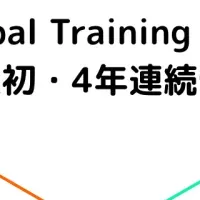
Bittensor's dTAO Upgrade: Transforming Decentralized AI Infrastructure for a New Era
HTX Research Analysis on Bittensor's dTAO Upgrade
On March 19, 2025, HTX Research unveiled a comprehensive analysis of the Bittensor network titled "dTAO and the Evolution of Bittensor: Reshaping Decentralized AI with Market-Driven Incentives." The report provides insights into the progressive journey of artificial intelligence, showcasing the shift from foundational model development to the enhancement of existing frameworks, with notable players such as DeepSeek and OpenAI leading the charge. This assessment emphasizes how Bittensor's Dynamic TAO (dTAO) upgrade addresses key challenges in decentralized AI systems, positioning it as a front-runner within the sector.
Bittensor's Structural Foundation for Decentralized AI
Bittensor's architecture is composed of three principal elements: the Subtensor blockchain, a Polkadot parachain equipped with EVM compatibility; 64 specialized subnets; and a governance-focused Root Subnet. A dual-key security system—Coldkey-Hotkey—is employed along with a subnet UID framework to ensure secure and transparent participation from both miners and validators. Central to its operational strategy is the Yuma Consensus (YC), an innovative incentive mechanism that diverges from conventional static rewards. This consensus mechanism evaluates validators' weight vectors, based on historical performance and stakes, to distribute TAO rewards every 12 seconds, fostering a self-sustaining cycle of "stake → weight → reward." Furthermore, this structure aligns individual contributions with incentives while reducing the risk of malevolent actions through regular adjustments.
The dTAO Upgrade: Transforming Resource Allocation
Launched on February 13, 2025, the dTAO upgrade introduces liquidity pools for subnet tokens, fundamentally transforming Bittensor's economic landscape. Some notable features include:
- - Subnet Token Liquidity Pools: dTAO tokens from each subnet are linked with TAO in automated market-maker pools, facilitating price discovery driven by supply and demand.
- - Emission Rebalancing: Half of new subnet emissions are directed into liquidity pools, promoting long-term engagement.
- - Validator-as-VC Dynamics: Validators are now functioning similarly to venture capitalists, staking TAO into promising subnets to optimize returns.
This upgrade effectively addresses earlier systemic issues, such as validator centralization, resource redundancy, and incentive misalignment. By tying subnet rewards to market performance, dTAO encourages competition and spurs the development of specialized AI solutions, including advanced content detection systems and decentralized search engines.
Ecosystem Impact: Rise of High-Performing Subnets
With the implementation of dTAO, high-performance subnets have emerged, operating within a self-reinforcing feedback loop where rising token prices attract further TAO emissions, drawing in more users and validators. Examples of successful projects include:
- - Chutes: A CLI toolkit designed for decentralized application deployment, which saw its subnet token escalate rapidly thanks to its integration with Bittensor's Subnets 19 and 56.
- - Multi Modality (Subnet 4): This subnet focuses on the detection of AI-generated content and utilizes balanced challenges for validators and miners to maintain model precision.
However, projects like Kaito illustrate the potential shortcomings; they demonstrate that sheer technical ability does not guarantee success in the absence of substantial integration with core product utilities.
Despite the advancements presented by dTAO, ongoing challenges persist, such as a lack of real-world demand for TAO rewards, the risk of overlapping subnet resources, and enduring validator centralization. To foster sustained growth, HTX Research advocates for on-chain verifiability, standardized subnet performance benchmarks, and the incorporation of subnet token utility—such as governance functions or service access—to deter speculative trading.
Conclusion
The dTAO upgrade denotes a shift from centralized governance toward market-driven incentives. While hurdles remain, Bittensor's architecture and economic model lay a robust foundation for innovative decentralized AI solutions. As subnet tokens evolve into practical tools, Bittensor is set to transform the collaborative and competitive dynamics within AI ecosystems. HTX Research is dedicated to providing thorough assessments of these developments and delivering actionable insights at the intersection of AI and blockchain technology. For the complete report, visit HTX Research.
About HTX Research
HTX Research serves as the dedicated research division of HTX Group, focused on producing in-depth analyses, comprehensive reports, and expert evaluations in fields spanning cryptocurrency, blockchain technology, and emerging market trends. With a commitment to delivering data-driven insights and strategic foresight, HTX Research plays a crucial role in shaping industry viewpoints and facilitating informed decision-making within the digital asset landscape. Utilizing advanced research methodologies and leading-edge analytics, HTX Research positions itself at the forefront of innovation, driving thought leadership and enhancing understanding of evolving market dynamics.
For more information, visit HTX Research.
Topics Consumer Technology)










【About Using Articles】
You can freely use the title and article content by linking to the page where the article is posted.
※ Images cannot be used.
【About Links】
Links are free to use.